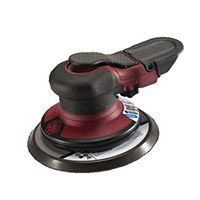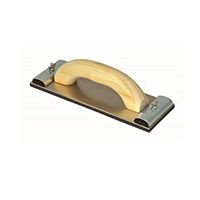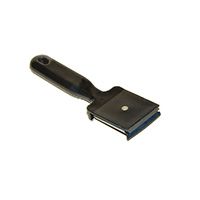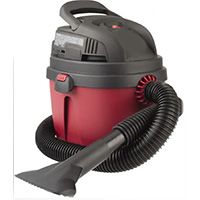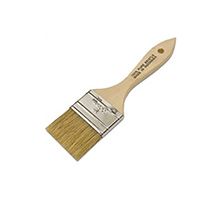We may be compensated if you purchase through links on our website. Our team is committed to delivering honest, objective, and independent reviews on home products and services.
Project details
Skill
Cost
Estimated Time
*Cost information in this article sourced from Angi.
Stair treads endure constant wear and tear, often leading to a worn-out appearance and structural damage. Refinishing these treads restores their beauty and protects the wood from further damage. This process, while time-consuming, is a manageable DIY project for most homeowners.
In the video above, This Old House expert Nathan Gilbert demonstrates the steps to refinish stair treads effectively.
Understanding the Importance of Stair Tread Maintenance
Over time, the protective finish on these treads can wear away, exposing the wood to moisture, dirt, and further damage. Regular maintenance and refinishing can enhance the overall appearance of your home, extend the life of your stairs, and prevent safety hazards caused by slippery or worn-out treads.
Assessing Your Stair Treads
Before beginning the refinishing process, it’s crucial to assess the condition of your stair treads. This evaluation will help you determine the extent of the work required and the appropriate approach.
Identifying Wear and Tear
Look for signs of wear, such as:
- Areas where the finish has completely worn away
- Discoloration or water stains
- Loose or creaking treads
- Scratches or gouges in the wood
Determining the Type of Tread
Modern stair treads feature a solid oak core and a solid nosing with veneer on the top and bottom. Understanding your tread composition is crucial, as it affects how much sanding you can safely do without damaging the tread.
Preparing for the Stair Refinishing Process
Before starting the project, you’ll need to gather all the necessary tools and materials.
Tools and Materials Needed
- 80-grit and 120-grit sandpaper
- Hand sanding block
- Masking tape (optional for precision)
- Paintbrush
- Random-orbital sander
- Scraper
- Tack cloth
- Vacuum with a brush attachment
- Water-based polyurethane
Safety Precautions
When refinishing stair treads, safety should be your top priority. Always:
- Ensure proper ventilation in the work area
- Use caution when working on stairs to prevent falls
- Wear protective eyewear and a dust mask
The Stair Tread Refinishing Process
Refinishing stair treads involves several steps, follow these to achieving a durable and attractive finish.
Sanding the Treads
- Begin with 80-grit sandpaper on your random-orbital sander to remove the old finish and any surface imperfections.
- Use a scraper to remove built-up finish in corners and hard-to-reach areas.
- Follow up with 120-grit sandpaper for a smoother surface.
- Hand-sand around balusters and in tight corners.
We advise against using a belt sander here; it is too aggressive for this work. When sanding by hand, remember to sand with the wood grain.
Cleaning Between Steps
Thorough cleaning between sanding passes is essential for a smooth final result. We recommend taking the following cleaning measures:
- Vacuum the treads after each sanding pass.
- Wipe down the treads with a tack cloth to remove any remaining dust or debris.
- Avoid using wet rags, as this can raise the wood grain.
Applying the Finish
For a durable, long-lasting finish, follow these steps:
- If changing the wood color, apply a wood conditioner followed by an oil-based stain using a cotton cloth.
- Apply a coat of water-based polyurethane using a high-quality brush.
- Work with the grain, applying the polyurethane slowly and evenly to avoid bubbles.
- Allow the first coat to dry for a few hours.
- Lightly sand the dried polyurethane with 220-grit sandpaper.
- Clean the surface and apply two more coats, sanding between each coat but not after the final coat.
Use even strokes when applying polyurethane, finishing each tread with one long pass along the grain.
Tips for a Successful Refinishing Project
To create the best possible outcome for your stair tread refinishing project, consider these helpful tips:
- Consider refinishing at night to minimize disruption to household traffic.
- If staining, remove all of the old finish to achieve even stain absorption.
- Take care not to sand through veneered surfaces on modern treads.
- Work on every other tread to allow continued use of the stairs during the refinishing process.
Handling Common Refinishing Challenges
Refinishing stair treads can come with various challenges. Here’s how to address some common issues and ensure a smooth refinishing process.
Tackling Deep Gouges and Scratches
If your stair treads have deep gouges or scratches, you may need to utilize wood filler before sanding. Select a wood filler in a shade that matches your treads. Apply it with a putty knife, allow it to dry fully, and then sand the area evenly before proceeding with the overall sanding process.
Dealing with Uneven Staining
Uneven staining can occur if remnants of the old finish remain on the tread. To avoid this, remove all old polyurethane or varnish thoroughly. Alternatively, a pre-stain wood conditioner can help achieve an even stain application by balancing the wood’s absorption rate.
Avoiding Dust Contamination
Dust contamination during the refinishing process can ruin the finish. To prevent this, confirm your work area is clean and isolated from other surrounding spaces where dust can travel. Use a vacuum with a brush attachment after each sanding pass and before applying any finish.
Maintaining Your Refinished Stair Treads
After investing time and effort into refinishing your stair treads, proper maintenance is crucial to preserve their beauty and extend their lifespan.
Regular Cleaning
We recommend sweeping or vacuuming your treads regularly to remove dirt and debris. For a deeper clean, use a slightly damp mop, but avoid exposing the wood surface to excess water.
Finally, wipe up spills immediately to prevent water damage.
Periodic Touch-Ups
Be sure to promptly address scratches or wear spots with light sanding and reapplication of polyurethane.
We also recommend applying a fresh coat of polyurethane every few years, especially if your staircase is subject to heavy foot traffic.
Protecting High-Traffic Areas
If your stairs see a lot of use, consider taking additional protective measures to maintain their appearance. For instance, you can:
- Educate family members on the importance of removing shoes when using the stairs to prevent dirt and grit from scratching the surface.
- Install hands-free devices like automatic vacuums to keep the stairs clean without extra effort.
- Use protective stair mats or runners to minimize wear on the treads.
